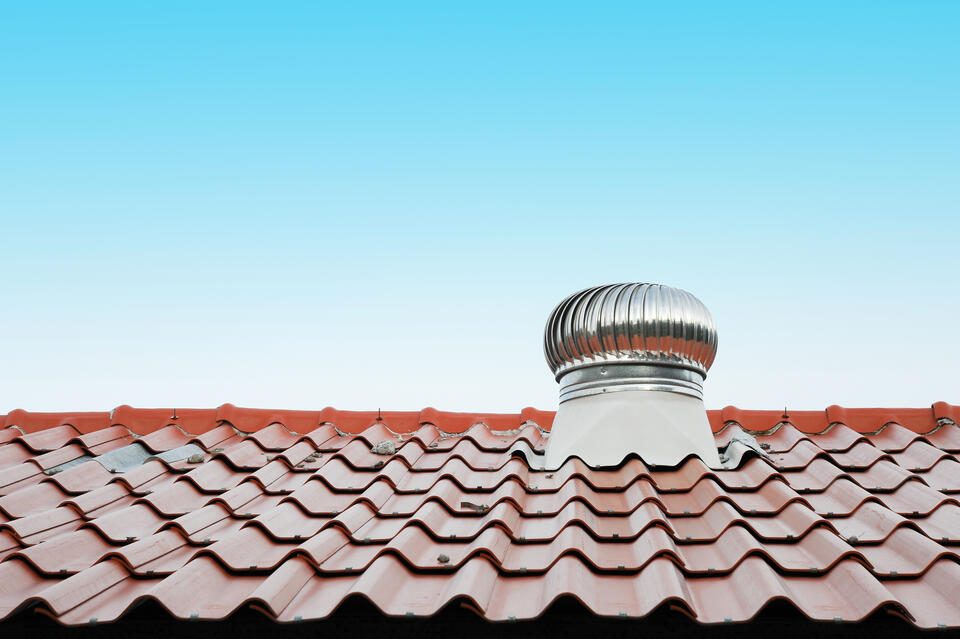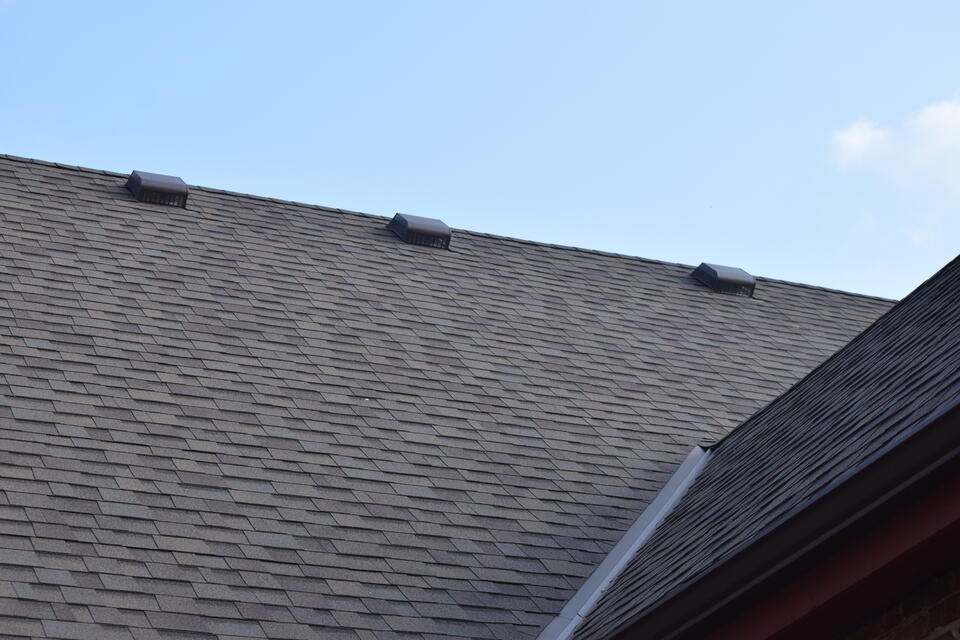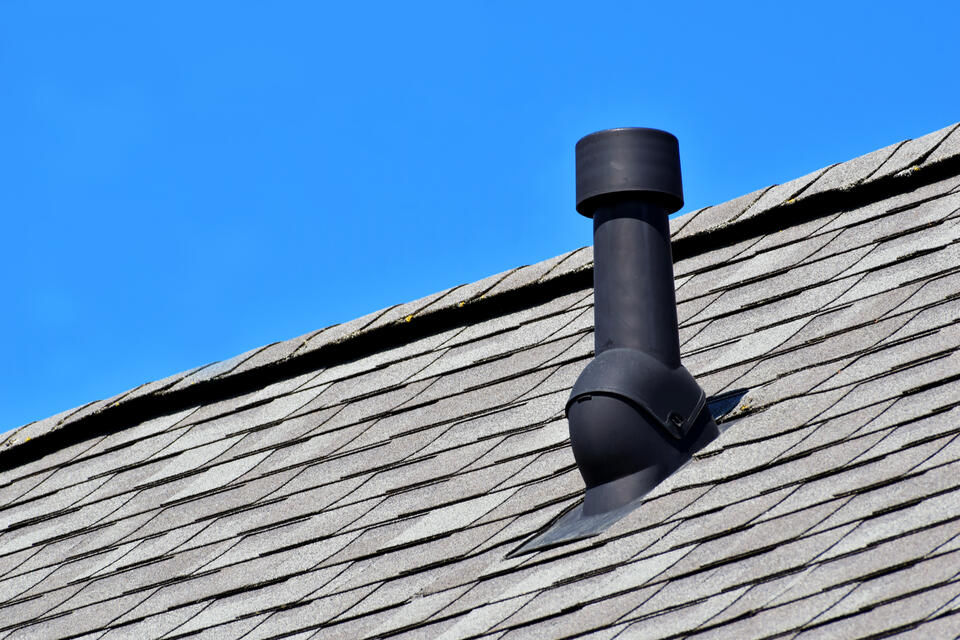6 Types Of Roof Vents For Your Home
Your roof does more than just protect your home from the elements—it plays a critical role in regulating temperature and moisture levels. Roof ventilation is key to maintaining this balance, ensuring your home stays comfortable, energy-efficient, and free from issues like mold or ice dams.
One crucial component of roof ventilation is the use of roof vents, which come in different types, each designed to meet specific needs. Choosing the right one can make a big difference in your home’s health and energy costs. Here’s what we’ll cover in this blog post:
- Why roof ventilation is vital
- The different types of roof vents and their functions
- A detailed look at various roof vents, including a numbered list of common options
- How to choose the right roof vent for your home
🤔 Why Roof Ventilation Matters

Proper ventilation prevents heat and moisture build-up in your attic, which can lead to costly problems. Without adequate airflow, you’re at risk of:
- Ice dams in winter, which occur when warm air in your attic melts snow on the roof. The resulting water can refreeze at the edges, causing structural damage.
- Mold and mildew, often caused by moisture accumulation.
- Higher utility bills due to inefficient heating and cooling systems battling fluctuating attic temperatures.
Roof vents are integral to maintaining optimal airflow and preventing these issues. Now, let’s explore the different options available.
Types of Ventilation
There are two main categories of roof vents:
Intake vents
Intake vents are designed to pull fresh, cool air into your attic space, ensuring proper airflow throughout the roofing system. These vents are usually located near the eaves or soffits, where they can maximize air intake. Common types of intake vents include soffit vents, which are installed directly into the underside of the roof’s overhang, and edge vents, which are placed along the roof’s edges. By introducing cooler air, intake vents work in tandem with exhaust vents to create a balanced ventilation system, preventing moisture buildup and maintaining consistent temperatures.
Exhaust vents
Exhaust vents are responsible for expelling warm, stale, and humid air from your attic to the outside. These vents are typically installed higher up on the roof, such as along the ridge or near the peak, to leverage the natural rise of hot air. Popular types of exhaust vents include ridge vents, which run along the roof’s peak for seamless ventilation, as well as box vents and power vents, which use fans to assist airflow. Properly functioning exhaust vents help prevent overheating, reduce energy costs, and protect your roof from damage caused by trapped heat and moisture.
Within these two categories, you’ll find various products specially designed to suit different types of homes and climates. Choosing the right combination of intake and exhaust vents is essential to creating an efficient ventilation system that keeps your roof in top condition year-round.
👉 6 Types Of Roof Vents

Choosing the right type of roof vent is essential for maintaining proper airflow in your home, preventing moisture buildup, and prolonging the lifespan of your roof. It helps improve energy efficiency and keeps your living space comfortable year-round.
1. Ridge Vents
Ridge vents are installed along the peak of your roof and are designed to let hot air escape evenly from the entire length of the attic. This type of vent blends seamlessly into the roofline, making it one of the most visually appealing ventilation solutions. Ridge vents are particularly effective when paired with soffit intake vents, which allow cooler air to flow into the attic while the ridge vents expel the hot air. This balanced airflow helps regulate attic temperature and prevents moisture buildup, reducing the risk of damage to your roof and insulation. Ridge vents are low-maintenance and work well in most climates, making them a popular choice for modern homes.
2. Box Vents
Box vents, also known as static vents, are individual units installed near the peak of the roof. These vents provide a direct pathway for hot air to escape from the attic. However, because each box vent covers a limited area, multiple units may be needed to adequately ventilate larger attics. Box vents are a cost-effective option and are relatively easy to install. However, they work best in conjunction with soffit or intake vents to create a steady flow of air through the attic. Unlike ridge vents, box vents are more visible from the outside, which could be a consideration for homeowners concerned about aesthetics.
3. Gable Vents
Gable vents are positioned on the exterior walls of the attic, near the roofline, and allow hot air to escape through large openings. These vents are typically triangular or rectangular and can add a decorative element to the home’s exterior. Gable vents work effectively when combined with soffit vents or other intake vents to promote airflow. However, they may be less efficient in homes with small or irregularly shaped attics. Additionally, gable vents rely on wind or natural convection to circulate air, so their performance may vary depending on the climate or weather conditions. Despite their limitations, gable vents are a simple and budget-friendly option for attic ventilation.
4. Off-Ridge Vents
Off-ridge vents are installed just below the ridge of the roof and serve a function similar to ridge vents but with a narrower design. These vents are spaced out along the roofline, and their placement can be adjusted based on the attic’s ventilation needs. While off-ridge vents are effective at expelling hot air, they are highly dependent on wind to facilitate airflow, which can limit their performance in areas with calm or stagnant weather conditions. Off-ridge vents are a good alternative for roofs where ridge vents cannot be installed due to design constraints. However, they may not provide the same uniform ventilation as ridge vents and typically require supplemental intake vents to maximize efficiency.
5. Turbine Vents
Turbine vents, also called whirlybirds, use wind power to spin their turbines, creating suction that draws hot air out of the attic. These vents are highly effective in windy areas where consistent air movement keeps the turbines spinning. However, in regions with little to no wind, turbine vents may not perform as efficiently. They are a cost-effective and environmentally friendly ventilation option, as they rely on natural wind power instead of electricity. Turbine vents require proper maintenance to ensure the spinning mechanism remains functional and free from debris. Additionally, their protruding design may not appeal to homeowners seeking a more subtle or seamless look for their roof.
6. Powered Vents
Powered vents, or attic fans, are electrically operated and actively remove hot air from the attic at a much faster rate than passive systems. These vents are especially beneficial in areas with high heat and humidity, as they can quickly reduce attic temperatures and prevent moisture buildup. Powered vents often come with thermostats or humidistats, allowing them to turn on automatically when certain conditions are met. While they are highly effective, powered vents do require electricity to operate, which may increase energy costs. Homeowners should also ensure proper intake ventilation is in place to prevent creating negative pressure in the attic, which could draw conditioned air from the living spaces. Despite the added cost, powered vents are an excellent solution for homes in extreme climates.
🏠 Choosing the Right Roof Vent for Your Home

Selecting the right roof vent is crucial for maintaining a comfortable and energy-efficient home. The decision depends on factors such as your home’s location, roofing material, attic size, and climate. To make an informed choice, it’s important to evaluate a few key considerations:
Energy efficiency: The right roof vent can significantly reduce heating and cooling costs by ensuring proper airflow. A well-ventilated attic helps prevent heat buildup in the summer and minimizes moisture accumulation during the winter, both of which can impact your energy consumption. Look for vents designed to optimize airflow without compromising insulation.
Aesthetics: A roof vent should not only be functional but also complement your home’s design. Modern vents come in various styles and colors, so you can find one that blends seamlessly with your roofline without looking out of place. A well-chosen vent enhances your home’s curb appeal while serving its purpose effectively.
Durability: Your roof vent needs to withstand the specific weather conditions in your area, whether it’s heavy rain, strong winds, or snow. Materials like galvanized steel, aluminum, or high-quality plastic are designed for durability. Consider vents with UV protection and rust-resistant coatings to ensure they last for years to come.
Proper installation is just as important as picking the right vent. Even the best-quality roof vent won’t perform well if not installed correctly. That’s why hiring experienced professionals, like Shamrock Roofing and Construction, is essential. With the right expertise, they’ll ensure your roof vents are installed properly, maximizing their functionality and lifespan. Don’t leave your home’s ventilation to chance—choose wisely and rely on trusted experts.
🙌 Shamrock Roofing & Construction Has You Covered
For your roofing needs, you deserve a team that you can trust to deliver exceptional results. At Shamrock Roofing and Construction, we pride ourselves on our expertise and dedication to providing top-notch services. With years of experience in the industry, our team has the knowledge and skills to handle any roofing project with precision and care.
Whether you’re in need of roof vent installation, repairs, or a complete roof replacement, our team of professionals is committed to delivering the highest quality craftsmanship and ensuring your satisfaction. We understand the importance of a properly functioning roof and its impact on the overall integrity and comfort of your home. Contact us today for a consultation and let our team of experts guide you through the process. Experience the Shamrock Roofing and Construction difference and enjoy peace of mind knowing that your home is in the hands of trusted professionals.
